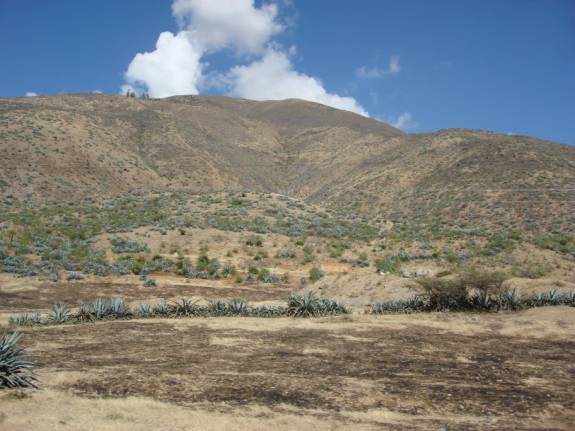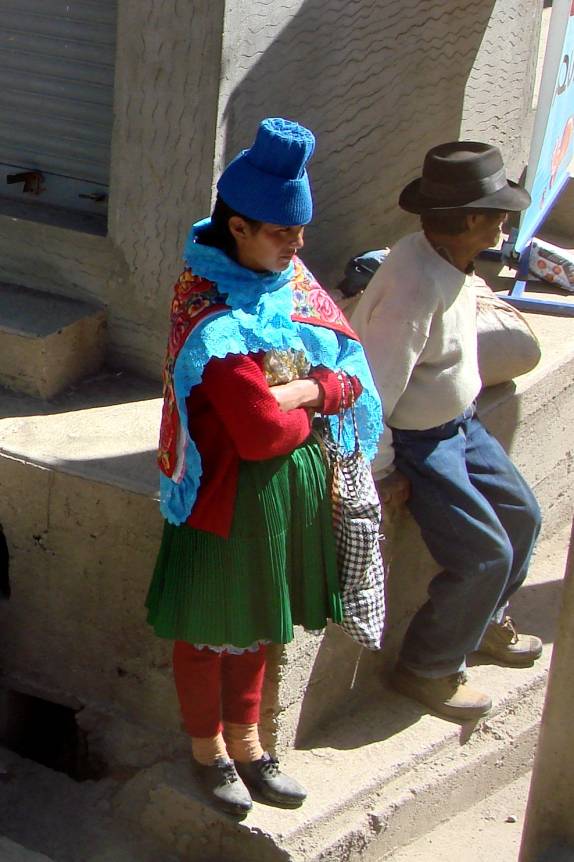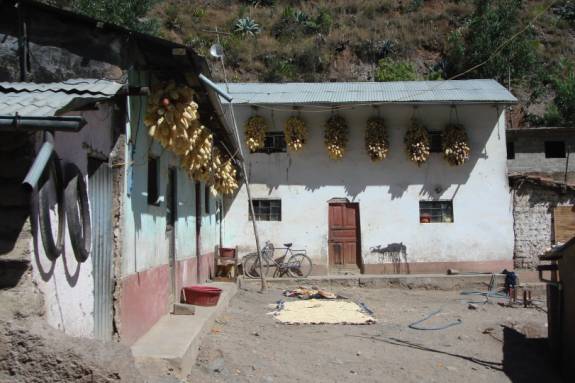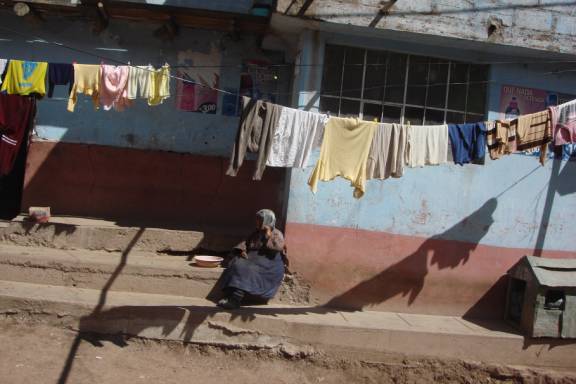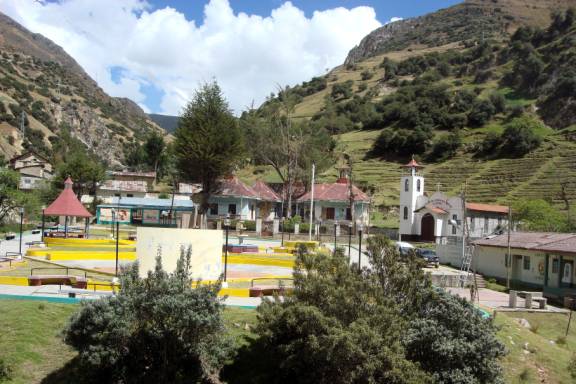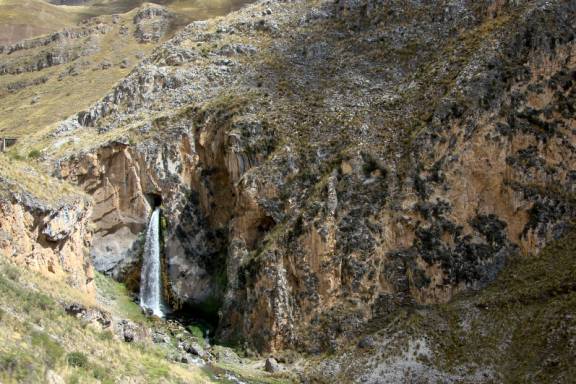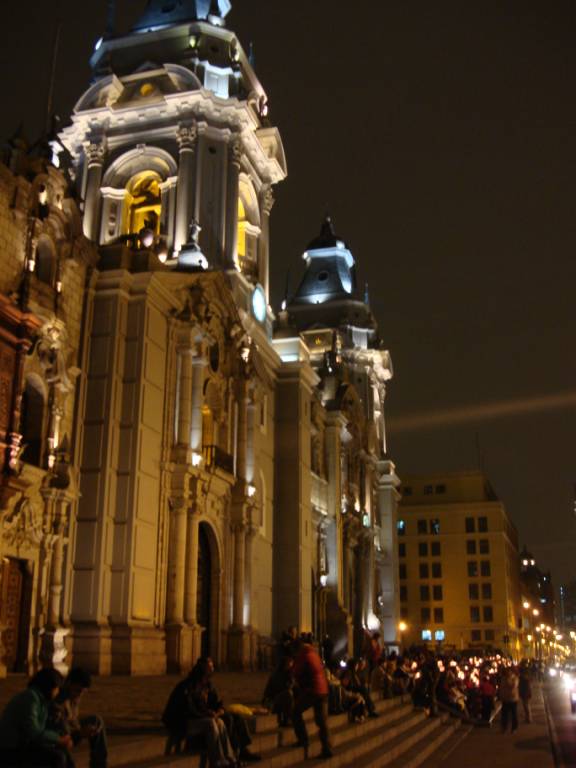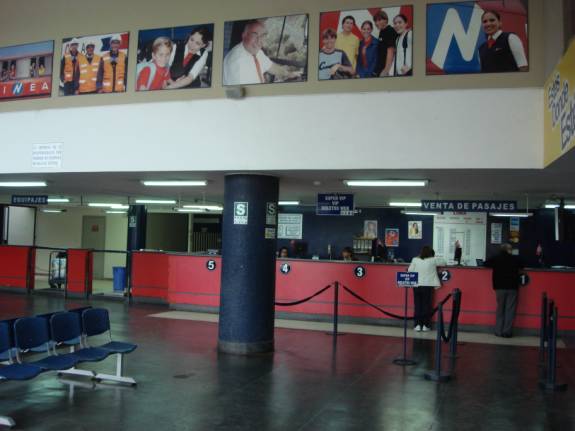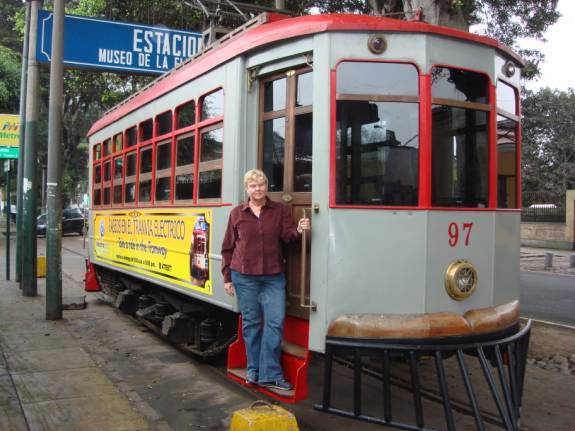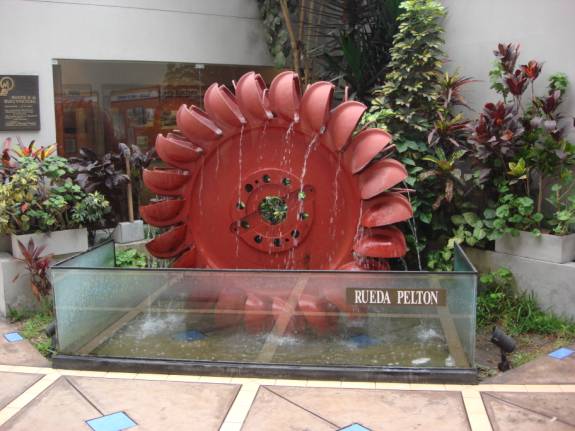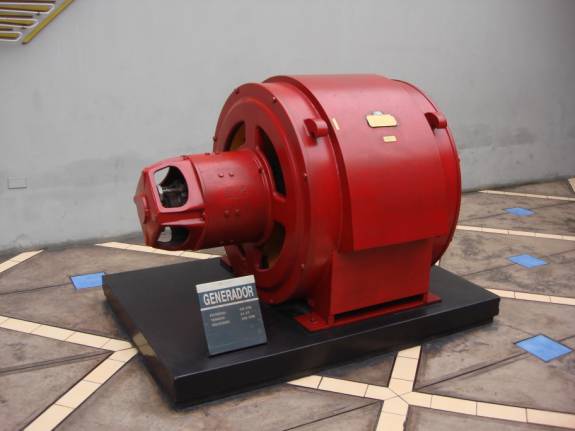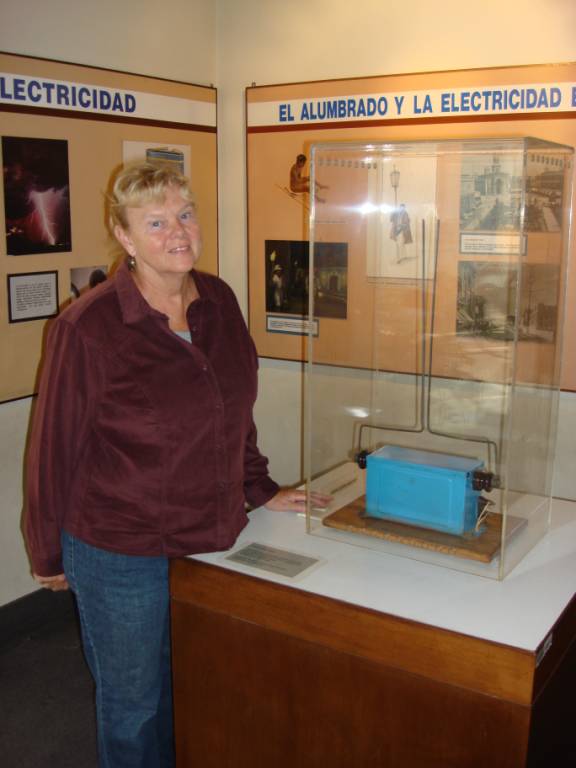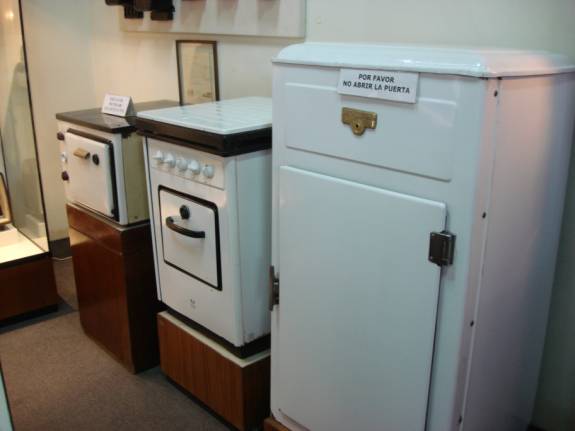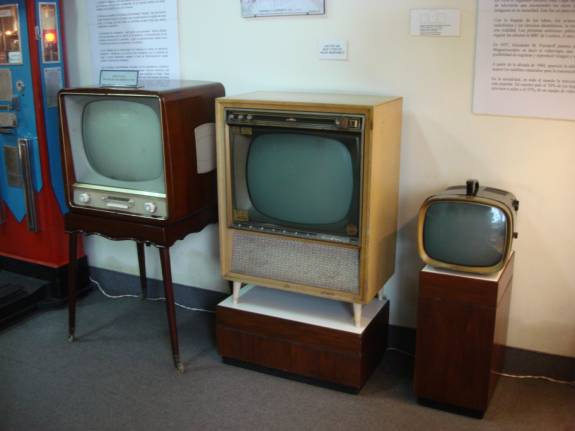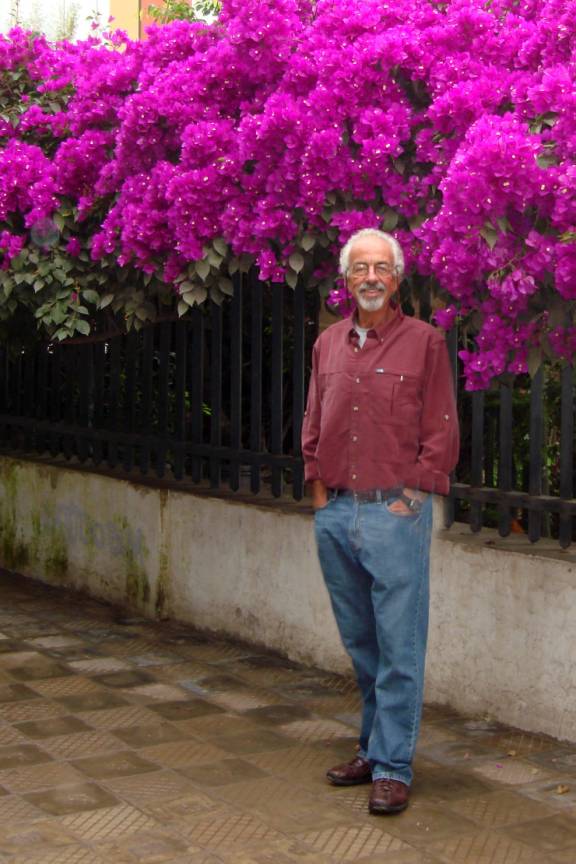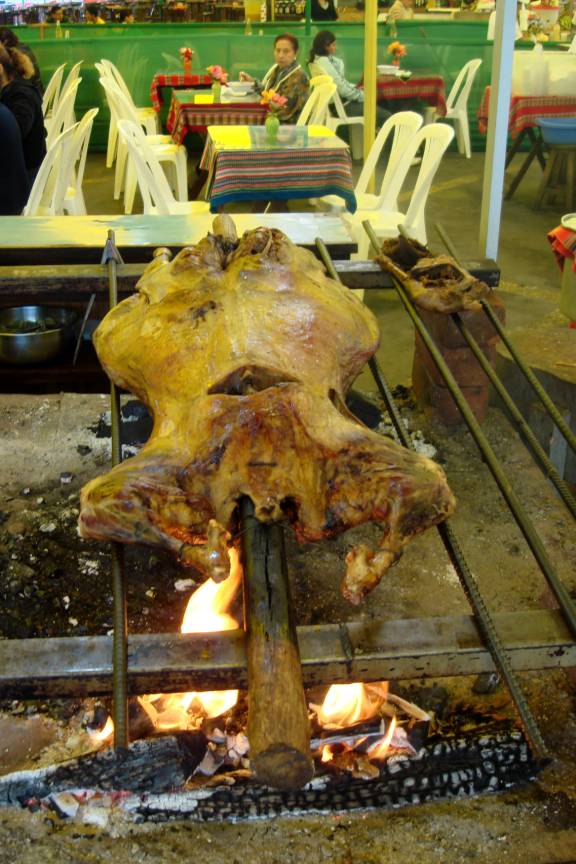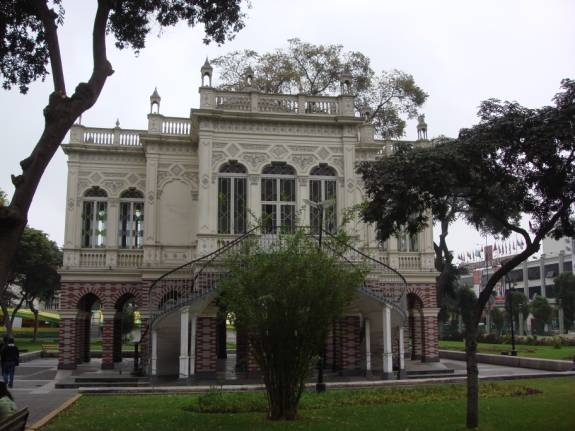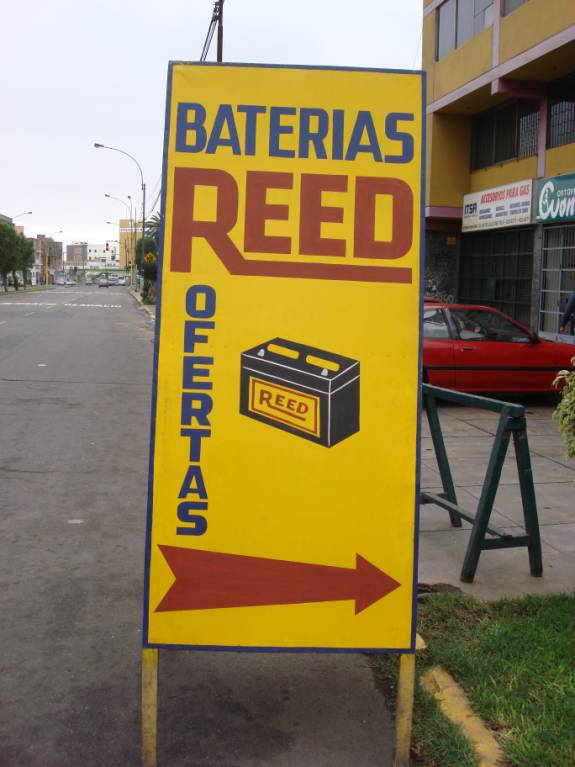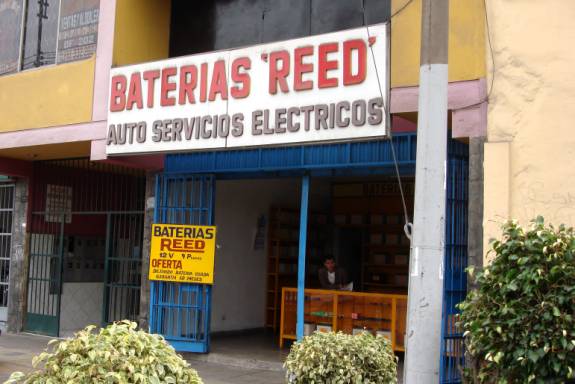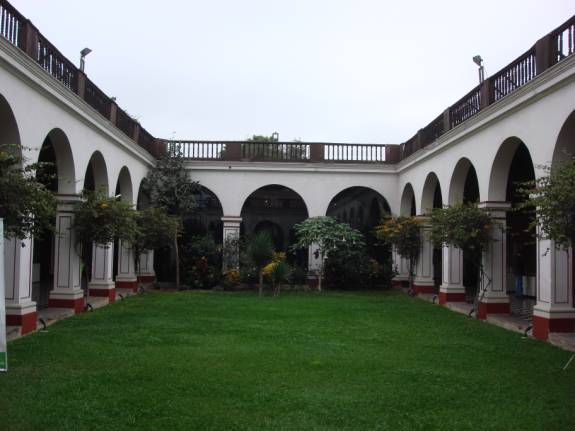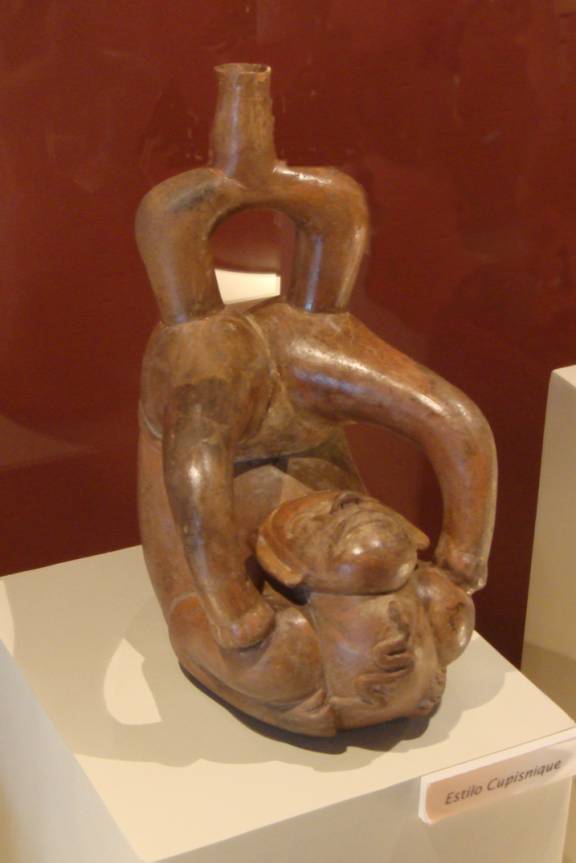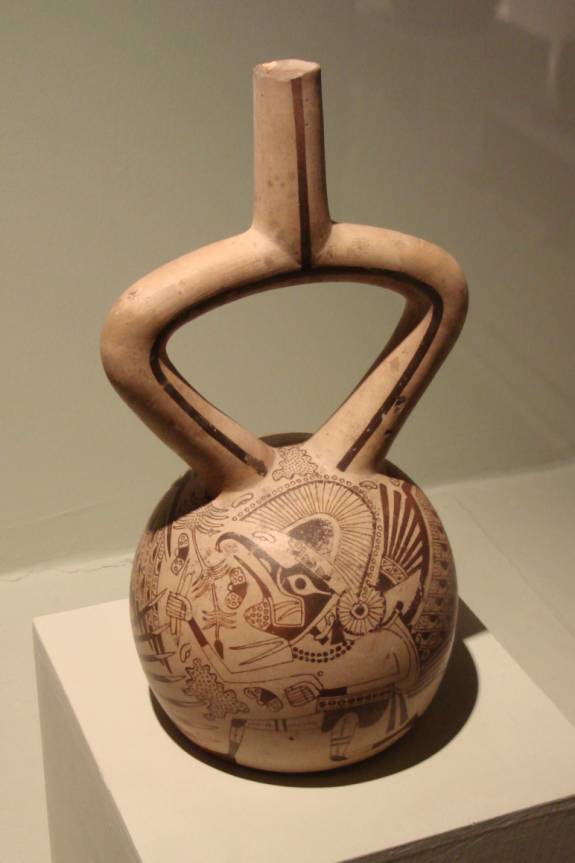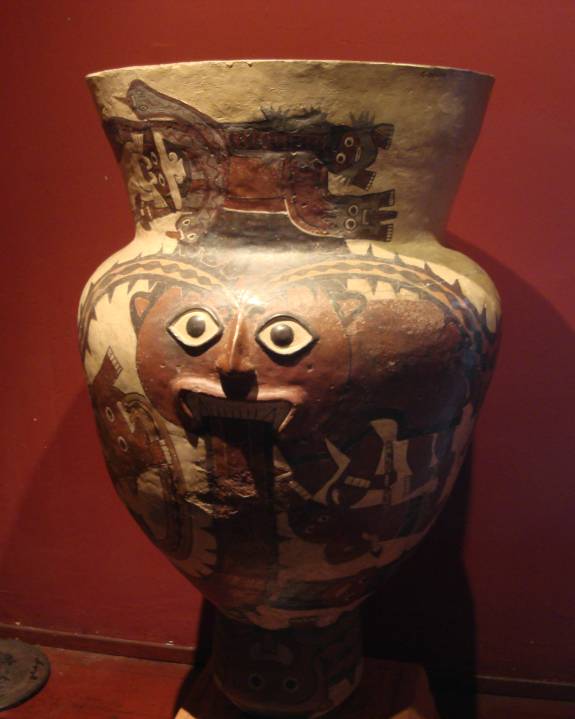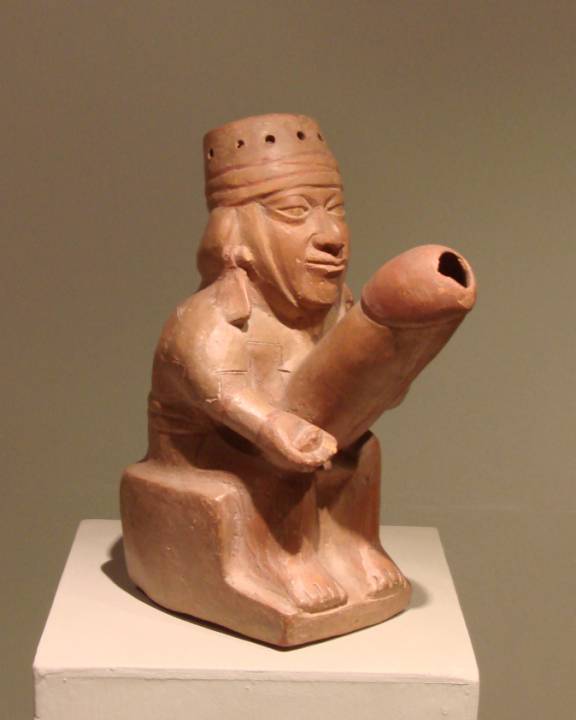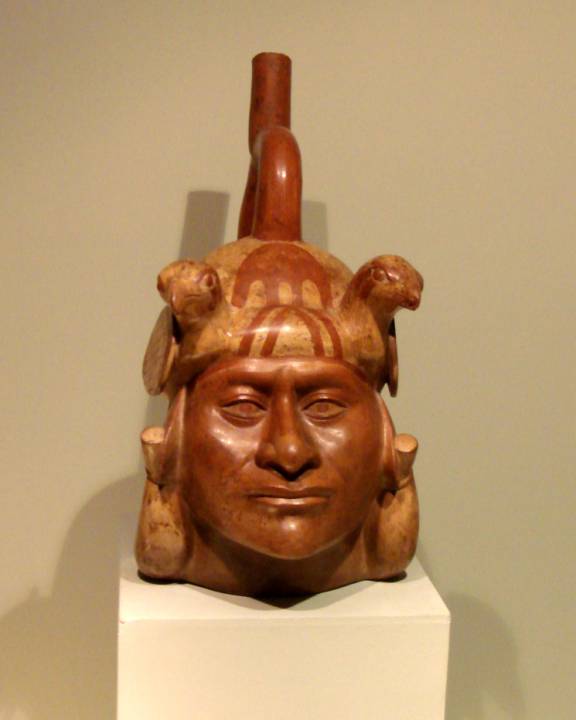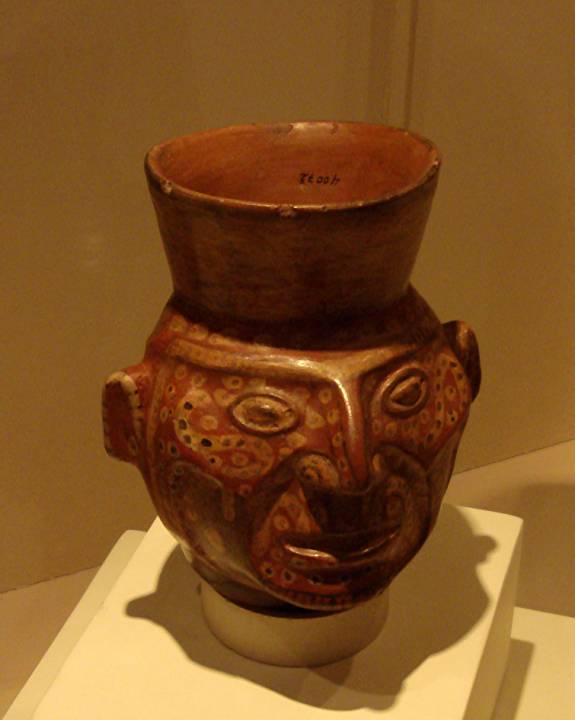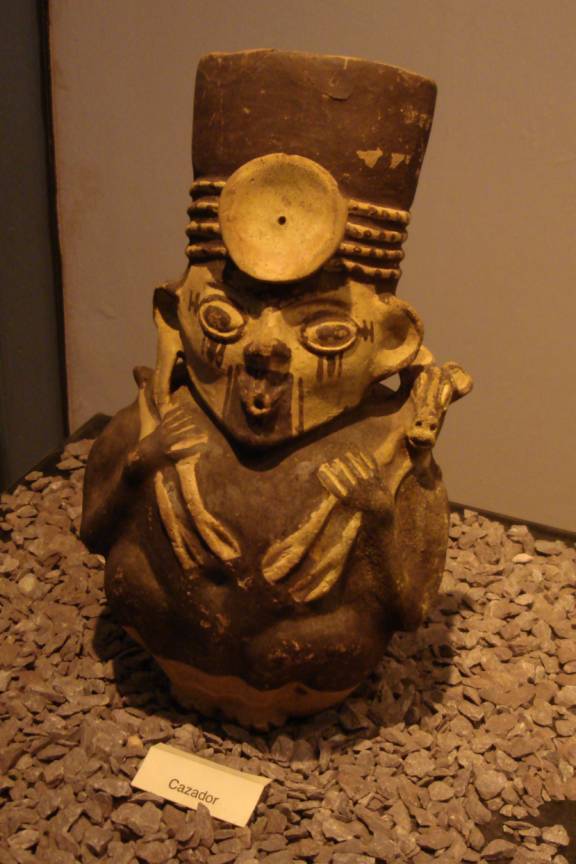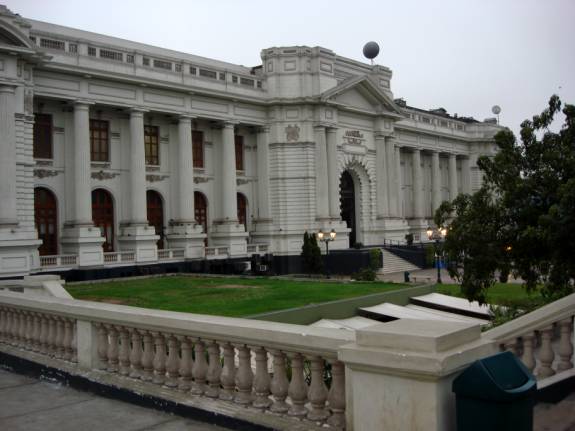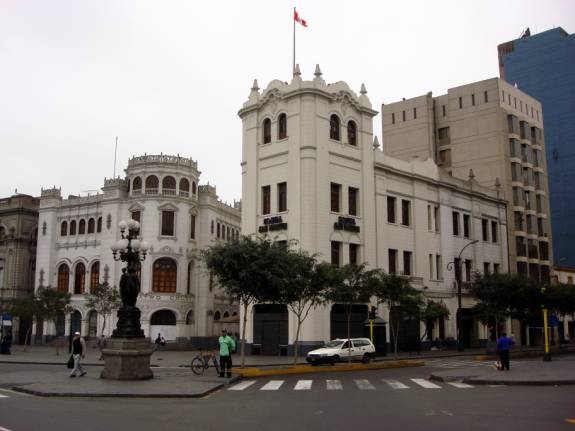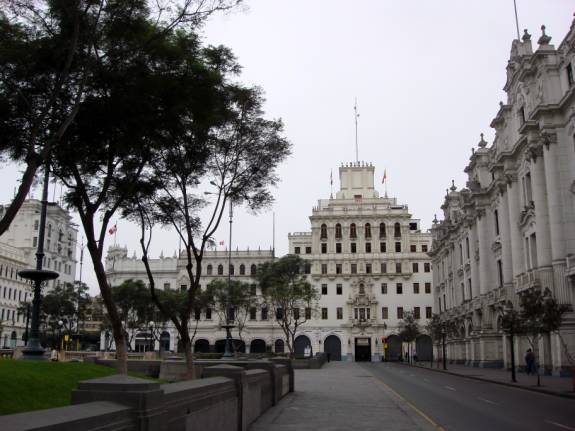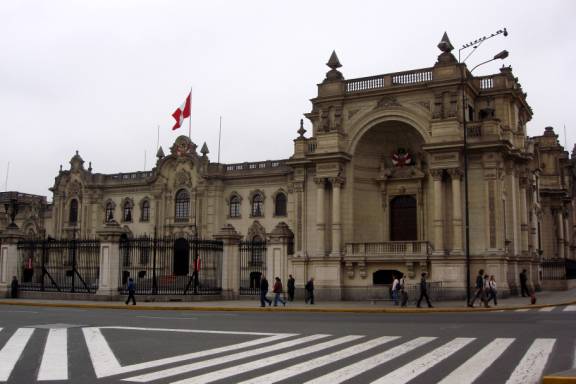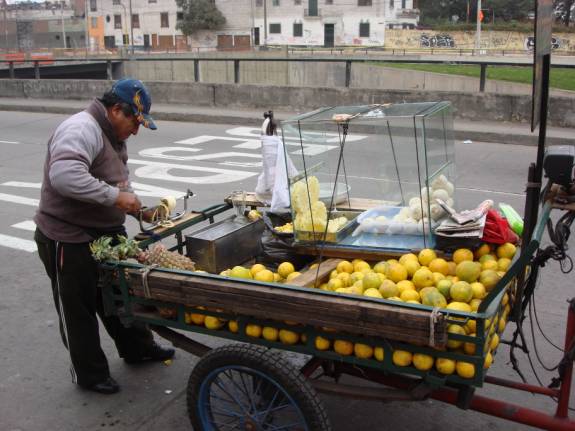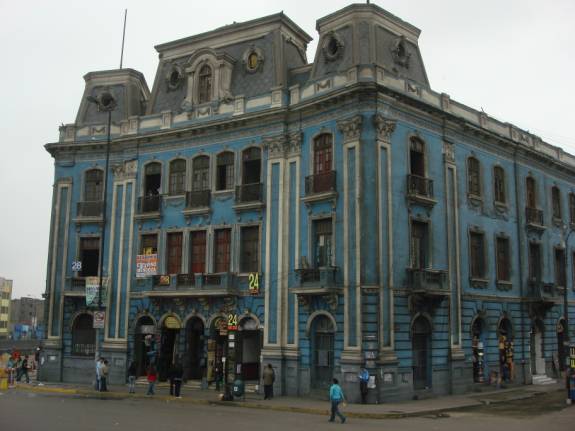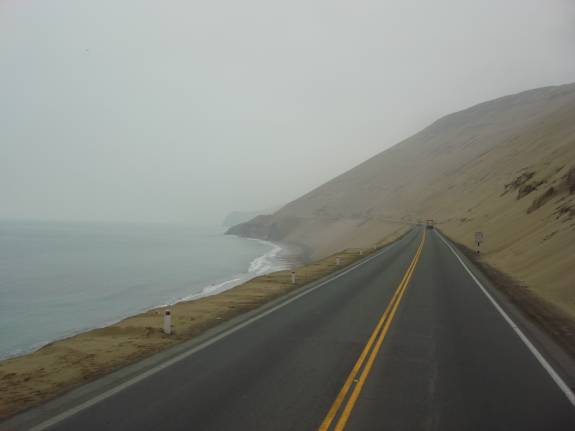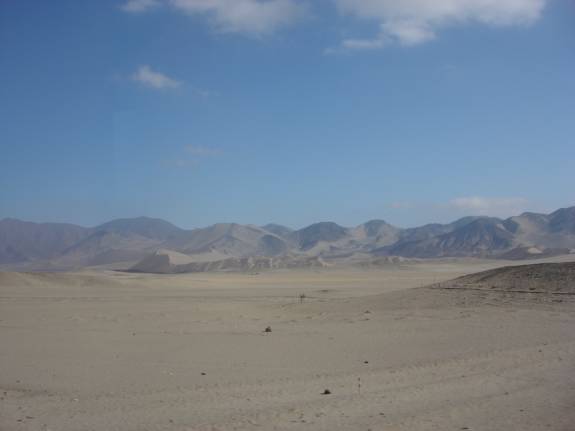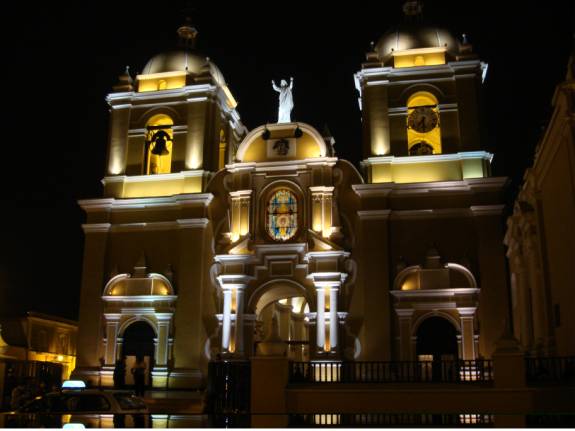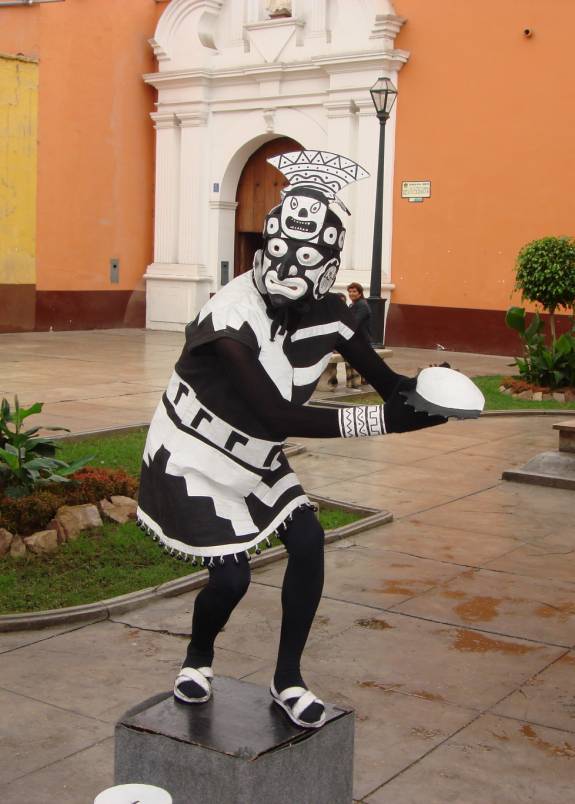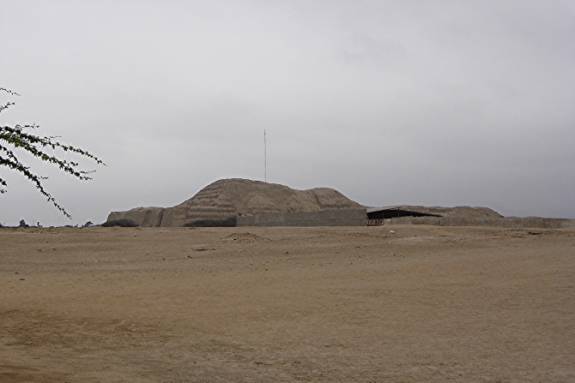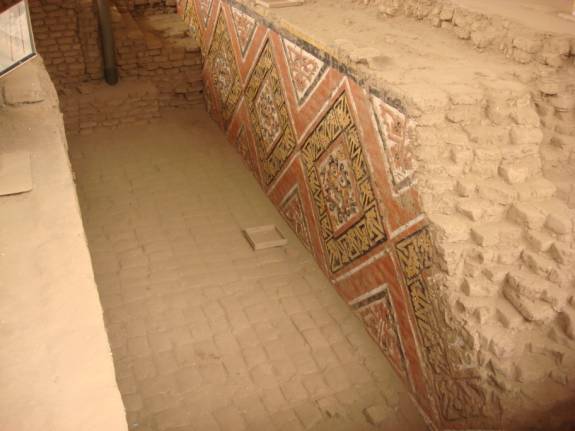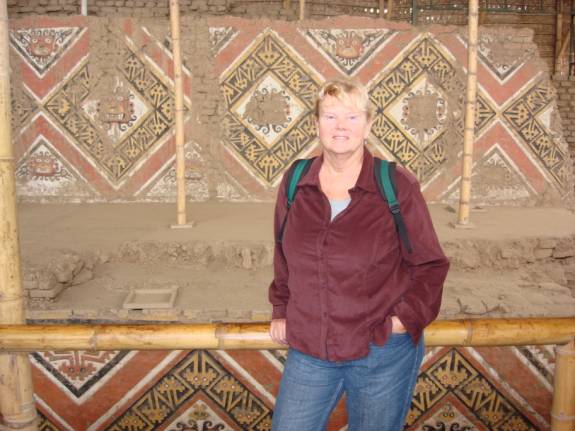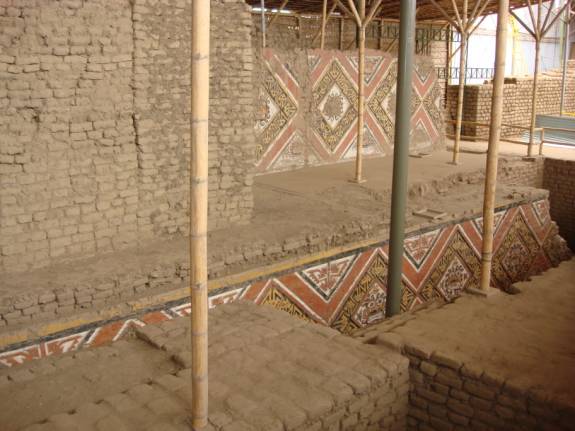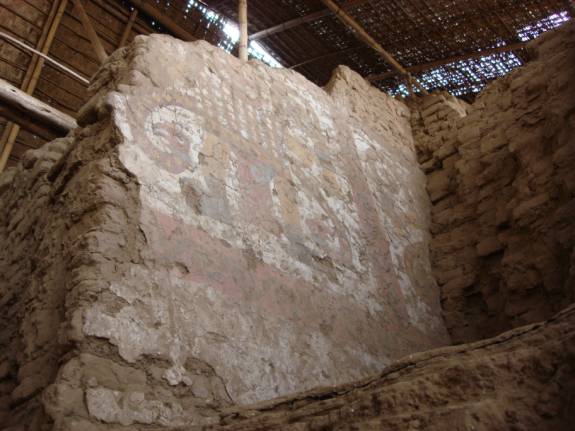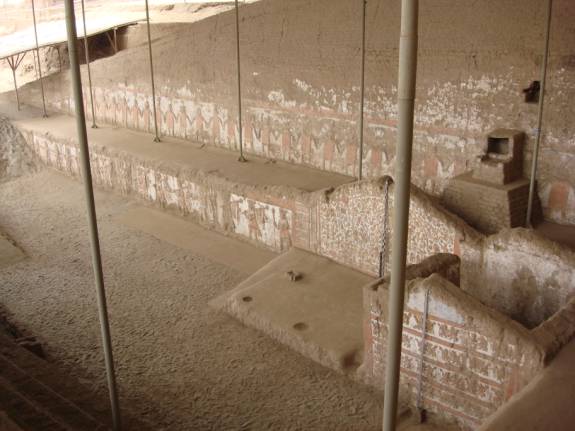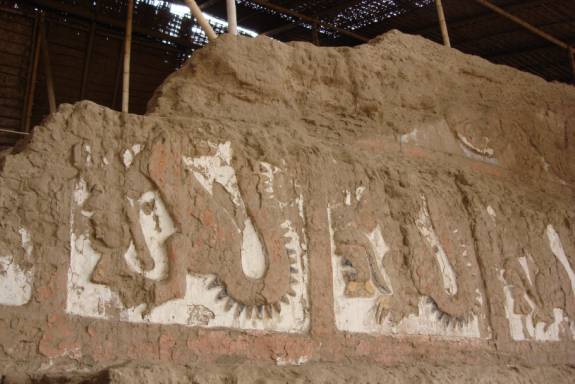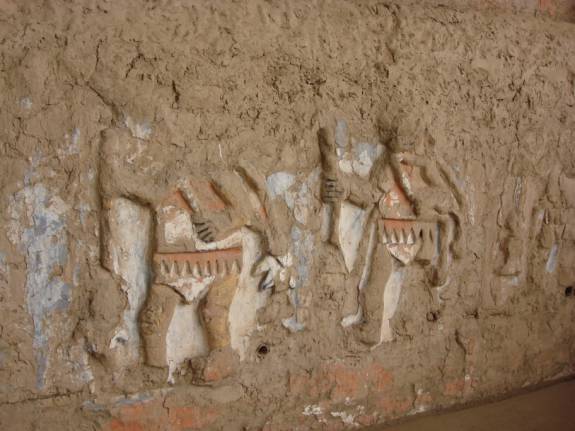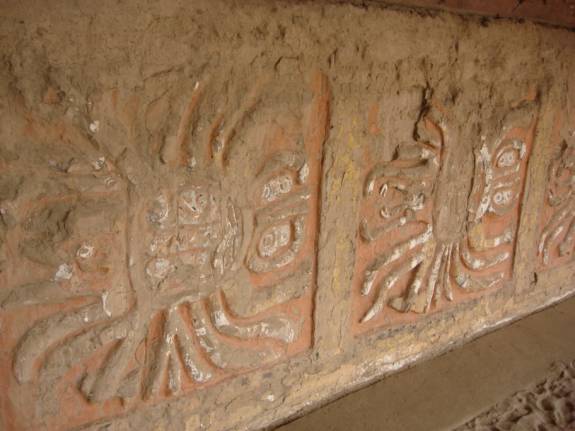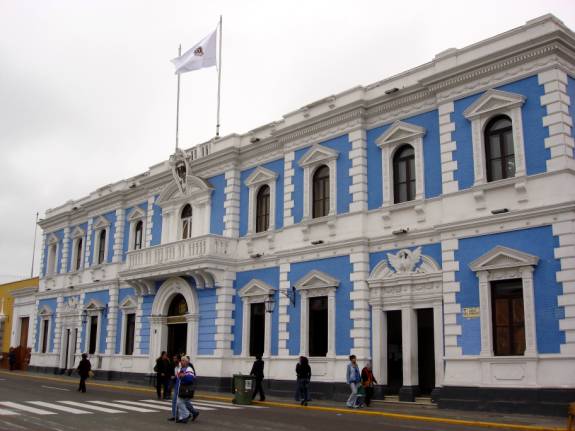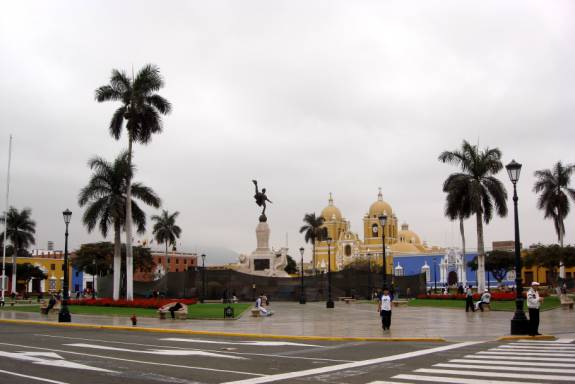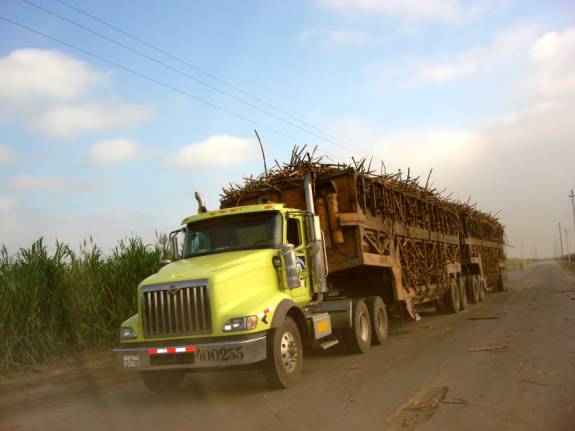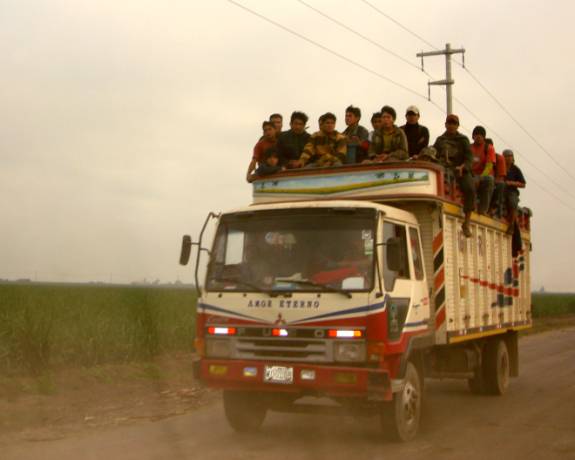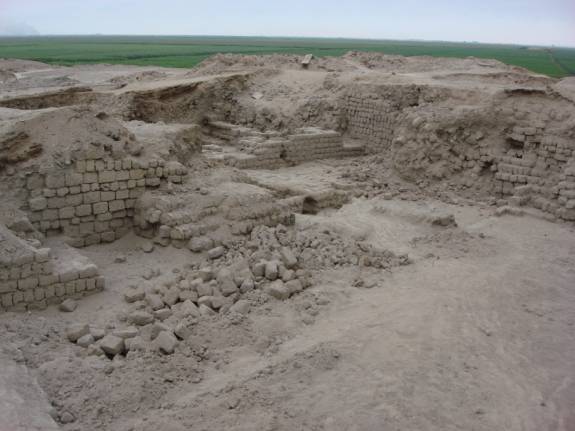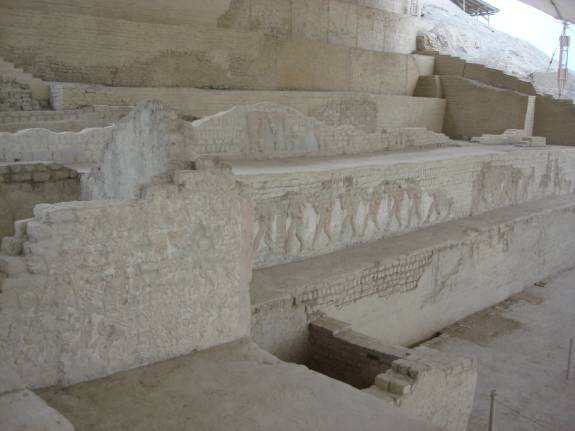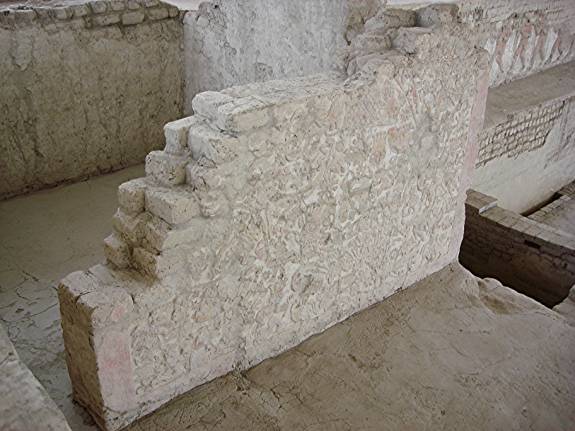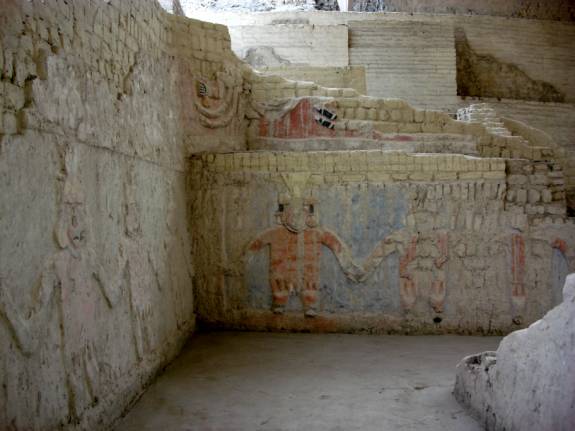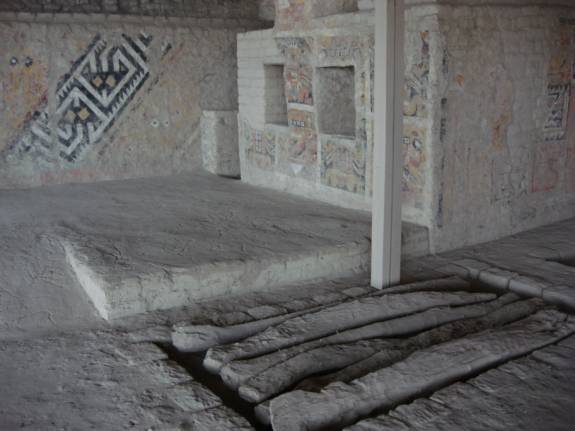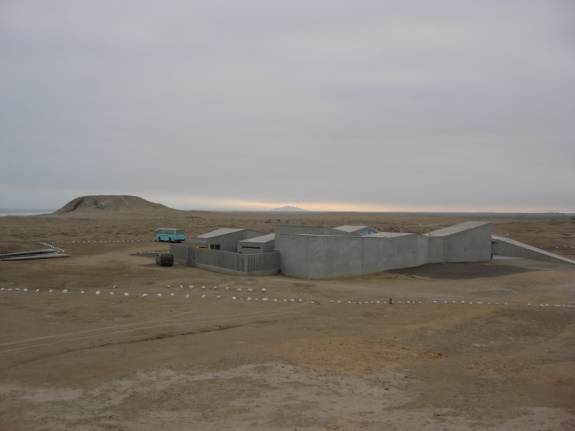|
|
|
|
Site Index:
|
UPDATE#21 07/10 thru 07/13
Howdy
Everybody, The adventures of 2006, 2007,
2008, and 2009 through 07/09/09 have been published on the website.
We continue with the latest edition and second in the series of Peru and
Ecuador adventures. UPDATE 2009 #21
07/10/09 thru 07/13/09 At last update, we covered the
first edition in the series of our adventures in Peru and Ecuador.
At that time, we were in
Huanuco, Peru. 07/10/09
FRIDAY HUANUCO, PERU to
LIMA, PERU
Judy and I awakened to a 6:45am
alarm. We hustled up to the GM
Internacional Bus Terminal located at 28 de
Julio, 535 in Huanuco.
Confirming that our bus was indeed going to operate today, now that the
Paros (strikes) had ended, we felt cheerful enough to head to the Café San
Felipe. Unfortunately, their coffee
machine was not working this morning so we opted to try breakfast at the
restaurant below the Hostal Las Vegas.
Pulling our 22” wheeled
backpacks along the fairly rough sidewalks and roadway, we arrived back at the
terminal for the 9:20am bus. It was
a beautiful day again and every seat in the bus was full.
There was a large contingent of missionary young people from the Church
of Latter Day Saints on board. These
were not North Americans as you might have expected. These were, most likely, young folks from Central and South
America. As I understand it, each
member must devote a couple of years to that type of evangelist service to the
church to fulfill an obligation. More
than 50,000 missionaries are serving missions for The Church of Jesus Christ of
Latter-day Saints at any one time. Most are young people under the age of 25,
serving in nearly 350 missions throughout the world.
Interestingly, Peru has a major training center within the country for
the training program. Fortunately,
we had booked our seats early enough to be aboard today.
The bus had the obligatory
passenger pickups and dropoffs along the way.
Their offices are often very small.
Normally, the stops are not more than 10 or 15 minutes.
The return route to Lima was
the exact reverse of the roadways that took us to
Huanuco. Even though, we
enjoyed the nice weather to view a different perspective of the mountain
scenery.
I am fascinated by the
different clothing styles worn by various groups of the indigenous Andean
natives. In general, we have found
that the native people in these northern parts seem to have become more
westernized in their dress compared with the peoples of the central highlands,
eastern, and southern regions of Peru.
Large bundles of corn were
hanging from the eves of numerous houses. I
don’t know if they are merely decorative, hung for drying, or, if perhaps,
have some other social or religious significance.
I suspect it is just drying, as there is a tarp on the ground with piles
of corn kernels being readied for grinding.
The GM
Internacional bus was in the First Class category.
Everything was clean, orderly, and was operated safely.
No Westinghouse dryer here…
Climbing high into the Andes
Mountains, the scenery was very spectacular.
Nearing the highest point, the
evidence of extensive mining was prevalent.
Most small villages are neat
and generally have a central plaza.
It is very common for the older
generation to care and watch over the younger generation.
In these communities, families often stay close throughout their entire
lifetimes.
Water rushes from the side of
this rocky mountain face…
In this tidy community, the
plaza centerpiece is a huge tower resembling a giant onion. Obviously, the inhabitants are fully focused on the growth
and harvesting of the onion crop.
A lovely, high altitude
mountain lake…
Along the way, our bus stopped
at a remote restaurant. It is a
chance for people to use the bathrooms, eat a meal, and stretch their legs.
Usually, these places are not very fancy and the facilities leave a lot
to be desired by North American standards.
The altitude is very high and
the peaks remain snowcapped all year long.
Quite a few passengers were experiencing “soroche”.
Soroche is
altitude sickness resulting in breathing difficulties and nausea.
Fortunately, we have not been affected but I suspect that it must be
quite miserable for those experiencing that common malady.
In the attempt to handle the
intense grade of the mountain passes, the sinuous highway winds endlessly.
It takes many road kilometers to accomplish much fewer straight-line
distances.
After a fairly bouncy ride in
seats near the back of the bus, we descended from the clear air of the Andes
Mountains into the darkening, smoggy, gray skies of Lima. Arriving at 18:45pm, we sought a taxi to transport us
to our room at the Hostal San Francisco. It
is sometimes more economical to hail a taxi from an adjoining street corner than
to accept the higher rates touted by the drivers hanging out at the terminal.
It almost always requires a bit of persistant bargaining.
In the corner of the historical
center, this fountain gracefully varies spray and pattern. It is quite nice at night and lots of people line up to be
photographed by the dancing waters. Nearby
to the fountain, we had dinner at Pollos Ala Brasa.
A candlelight vigil of sorts
was being held on the steps of the National Cathedral.
Across the street, the central
Plaza Mayor (known as the Plaza de Armas until 1990) was closed off to
pedestrians by troops of armed, police riot squads.
Everything remained peaceful.
07/11/09
SATURDAY LIMA, PERU
On this cool, misty morning, we
enjoyed breakfast at Pancho Fierro’s restaurant/café.
Just down from the hotel, we dropped off a bag of dirty laundry in
exchange for a promise for afternoon readiness.
A taxi took us to the terminal
for Transportes Linea. This
intercity bus company is one of the more reliable services for trips to the
north. We chose the “Servicio
Especial” scheduled to depart tomorrow morning at 10am.
For about $2, we took a taxi to
the Museo de Electricidad in the suburb of Barranco.
They have a fully restored, electric trolley car that we had hoped to
ride. Unfortunately, they were not
operating it today.
The free museum focuses on all
aspects of electric power generation and its uses.
It is a very interesting display.
Judy pressed on the button to
strike a high voltage arc from this Tesla Coil exhibit.
A room with antiquated
appliances was featured.
I’d be willing to bet that
some of you remember viewing these “highly advanced” TV models in your own
living rooms. I can fondly remember
my father just sitting and staring at the test pattern in total amazement.
The industry has certainly come a long way in a relatively short span of
years. Stay tuned; I think “I
Love Lucy” will be coming on soon in “snowy” black and white.
Barranco is an upscale suburb
of Lima that is quite nice.
These lovely, bronze statues
ornament a park near the ocean cliffs.
Gorgeous! …and the bougainvilleas are kinda pretty too…
The steep cliffs jut down to
the Pacific Ocean…
After a bit of walking to Los
Chorrillos, we hopped aboard a local minibus heading for the Museo de Artes.
Unfortunately, the facilities were closed for renovations.
Oh well, we just walked to another of the many interesting sites in Lima.
In one of the largest park
areas in Lima, there is a large section devoted to various food vendors.
This guy is preparing a Peruvian specialty that is favored on special
occasions. Called “Pachamanca”,
it is a traditional Andean dish. The baking or roasting process uses hot stones and an earthen
oven that is known as a huatia. Principal ingredients may include lamb,
mutton, pork, chicken, or guinea pig that have been marinated with Andean
spices. Tipical Andean produce
items, such as potatoes, green lima beans or "habas", sweet potato,
ears of corn, tamales and chiles, are often included in the cooking.
Cabrito is baby goat.
This one looks a little large to be cabrito, perhaps it is mutton, I
didn’t ask. Some folks say it
tastes like chicken.
The city park is beautiful.
There are statues, ornate buildings, museums, and, at times, live
theatre.
As we walked to another area,
we came across this interesting business bearing my last name.
I never expected to see a battery company with a name like this.
As you might expect, I got a real “charge” out of seeing it.
I’m willing to bet that their
batteries are very powerful and long lasting…
After walking a pretty good
distance, we hailed a taxi to take us the rest of the way to the Museo Nacional
de Arqueología,
Antropología, E
Historia del Peru. Located
away from any main streets, I don’t think I would have been able to find it
using the limited map we had.
This museum houses some of the
most important collections in the country.
This is the original of the
“Crossed Hands” modeling from the Kotosh site that we visited last week.
As you may remember, this is the “Female” set.
The “Male” set has been missing since shortly after their discovery
in the early 1960’s. They were
the only two in existence.
This important “Raimondi
Stellae” was an original from the Chavin de Huantar site near
Huaraz. Named for the Italian archeologist that made the discovery, it
was found in the hut of a peasant near the Temple.
The thriving pre-Inca culture existed from about 900 BC to about 500BC.
Judy and I visited the Chavin
de Huantar site last year.
Lots of original displays of
fine pottery portrayed all the historical cultures that have existed in Peru.
Of course, there were numerous
displays of the so-called, “Naughty Pottery”.
The persons of Royalty were
revered as gods. They wore ornate
pieces of gold embellishment whenever they were in the public eye. The large discs with the attached thick rods were worn in the
ears like earrings.
A “Cazador” is a
“hunter”…
“Pareja de Cuchimilcos”
translates to a “couple” of small
figurines of men and women with their arms held high (best known as "cuchimilcos").
These are representative of the Chancay Culture that existed around
1100AD to 1440AD.
More examples of “naughty
pottery”… Most of the erotic
pottery comes from the “Moche” or “Mochica” culture that existed north
of Lima circa 100AD to 800AD.
A display depicts the ransom of
gold that the last Inca King had gathered to pay the Spanish conquerors for his
release from captivity. There were
two more rooms filled with silver. Francisco
Pizarro’s soldiers executed
Atahualpa's 12-man honor guard and took the Inca king captive at the so-called
ransom room in Cajamarca. The
captors were offered a lofty sum in precious gems and metals to be exchanged for
the release of Atahualpa. Around
the year 1532, the Spaniard warriors took all the gold and silver but ended up
executing “Atahualpa” anyway in 1533.
We finally located the correct
bus to the historical center with good directions from a policeman.
We got off on Avenida Abancay near the Congreso building.
This view is the backside.
What can I say? Are you familiar with the term, “A picture is worth a
thousand words”. Just kidding, of
course…
This fancy limousine awaited a
wedding couple. Later, we saw it at
the Nacional Cathedral. It may have
been used in multiple weddings tonight or, perhaps, the same important couple
may have expanded their vows at the Cathedral.
Under the lights of night, the
Plaza Mayor, in central, historical Lima, is nothing less than spectacular.
With busy shopping
opportunities, this upscale street mall is always packed with affluent
Limeños. Restricted to
pedestrians only, Jirón
De La Union is a fun place for an evening stroll and people watching.
We’ve never seen anything
like these potato chips anywhere but Peru.
Made with some unique variety of native Andean spuds, they are of
multiple colors and the taste is great. I
wonder if Henry (OH HENRY) could grow and market these treats. Our friend Scott (MOLLY BROWN) could supply the peeler
rollers for the new enterprise. With
a party product like this, they could really be in the “chips”.
07/12/09
SUNDAY LIMA to
TRUJILLO, PERU
We were ready to begin another
full day of travel when the alarm sounded at 7:15am.
A Pancho Fierro’s breakfast would give us a good start.
With still some time to see
more of Lima, we walked to Plaza San Martin at the other end of the
Jirón De La Union pedestrian mall.
Unlike last night, the shoppers had yet to arrive.
Plaza San Martin, inaugurated
in 1921 to honor the first centenary of Peruvian independence, is one the
largest and most beautiful squares in Lima. It is dedicated to General Jose de
San Martin, a key leader for the struggle of independence in Southern America.
Together with Simon Bolivar, the second liberator of Peru, he declared Peru’s
independence on the 28th of July 1821 and was made the Protector of the newly
independent nation.
Plaza San Martin is surrounded
by numerous, well-preserved Republican buildings influenced by the French
architectural style typical in Lima at the beginning of the 20th century.
On the right, the Hostal San
Martin is an upscale accommodation; to the left, the Teatro Colon. This theatre was once
a very luxurious and respected venue. In the 50’s it became a cinema, later in
the 80’s, a porn movie theater, and subsequently deteriorated rapidly until it
was closed in 2003. The beautiful refurbished facade of the old ‘Teatro
Colon’ awaits a new role in Lima’s cultural scene.
Plaza San Martin is one of the
most beautiful architectural areas in Lima.
The buildings lining the huge square thrill the eye.
Astride his stately steed, the
statue of General San Martin is enormous and impressive.
Walking back to our hostel, we
passed by the Presidential Palace. Lining
the north side of Plaza Mayor, and officially known as the Palacio de Gobierno,
the presidential residence boasts an pair of impressive wings jutting outward
from each side of the main entrance (under the flag).
The building then runs a full city block to the backside.
In colonial times, it was the
location of Francisco Pizarro’s house, later becoming the Palace of the
Viceroys.
We gathered up our packs from
the Hostal San Francisco and hailed a taxi to the Transportes Linea bus
terminal. Being freshly squeezed,
the orange juice was delicious.
The comfortable bus departed on
time at 10am with a sparse load of passengers.
We were fortunate to have reserved front row seats #1 and #2 on the upper
deck giving us a great view of our trip.
Still in Lima, we passed around
a traffic circle area lined with buildings identical to this one.
When, and if, ever restored, this will become another focal point of this
city.
As the highway passes close to
the Pacific Ocean coast, visibility is almost always restricted by fog.
As we traveled further north,
the skies yielded to blue. Expanses
of sand and dunes stretch eastward from the sea to the mountains.
At 6:30pm, we arrived in the
major city of Trujillo. Founded
shortly after the Spanish Conquest by Francisco Pizzaro in 1532, the city was
dubbed with the same name as his home city in Spain.
A short taxi ride took us from the terminal to the Hostal Solari for our
check in to room #205. With a bit
of hard bargaining, we managed to get the rate down to an acceptable rate
equivalent of about $32 per night.
Close by at the main plaza, an
enjoyable band concert was being performed.
At one corner of the Plaza
Mayor, the 17th Century Cathedral is impressively lit at night.
We enjoyed a tasty dinner of
Chinese style food at Chifa Sam. Accompanied
with a big bowl of wonton soup, the huge serving of chicken breast with
vegetables was enough for us to share. Our
hostal room, being on the street side, was a little bit noisy due to local
traffic. Whenever possible, a
better choice would be an off-street room.
All in all, we will be quite happy during our several night stay here. 07/13/09
MONDAY TRUJILLO, PERU
Being a large city, the traffic noise was interrupting our sleep quite
early this morning. At 8am, we enjoyed the included continental breakfast at the
hotel.
Most of the interesting sightseeing opportunities in this area are
located in remote locations. The
most effective way to maximize time and effort is to join a day tour group to
provide the transportation. Having
an excellent reputation, we chose Moche Tours to sign up for a two-day set of
sites.
Across from the Moche Tours office and in front of this church, a street
entertainer performed mechanical-like movements whenever money was placed in his
box. Remaining motionless while
awaiting deposits, his act was delightfully executed.
I couldn’t resist contributing.
Our van group tour operator, Moche Tours, commenced the day’s
activities at the expansive site of the Huaca del Sol, or Temple of the Sun.
This major archaeological site was constructed during the time of the
Moche culture (100 BC-650 AD). Even
though the original height was 50 meters tall, it still reported to be the
largest structure built of adobe in the world.
The enormous stepped pyramid measures 1,250 feet in length and rises 135
feet above the surrounding plain. It is reported to be the tallest adobe
structure in the world. Estimates
are that a staggering 50 million to 100 million adobe mud bricks were used in
its construction.
In 1602, the Spaniards, seeking any gold treasure, intentionally diverted
the Santa Catalina River into the pyramid, which then washed away more than 1/2
of the Huaca del Sol on the west side. It is estimated that approximately 2/3 of
the structure has been lost to erosion and looting.
Over the years, the Temple of the Sun has been further damaged and eroded
by the weather forces of El Nino. At
present, the site is closed to all visitors.
Having been excavated by archeologists, the adjacent Huaca de la Luna, or
Temple of the Moon, provides a more interesting site to visit.
The word, “Huaca”, translates to Temple or Sacred Place.
Huaca de la Luna was occupied
between about 500 and 800 AD. Its
adobe construction includes three large platform mounds with adjacent plazas.
The temple measures about 950 feet by 690 feet.
Numerous layers of colorful
friezes adorned the multiple layers of adobe walls.
Geometric designs, perhaps carrying the image of their principal god,
Ayapaec, decorate some of the walls in a checkerboard fashion. The
Moche god, Ayapaec, is represented by a human figure with a tiger's mouth and
snarling fangs. "Ayapaec"
is a Quechua word that translates as "Wrinkle-Face".
This name was later given to the deity by the Inca because of the deity's
unusual appearance.
Our guide, Juan, explained many of the facets of these excavations.
Painted reliefs have been exposed in several of the platforms and plazas.
The
exterior walls of the platforms at Huaca de la Luna are embellished with the
remnants of mural paintings and sculptured reliefs with some depicting lines of
warriors carrying shields and war clubs. A
striking image of a two-headed serpent or a snarling stylized feline is rendered
in several locations.
A wall with the reliefs of sea life tells of their belief and reliance on
the ocean.
As we drove away from the complex, we had gained valuable insight into
the magnificence of the Moche culture and their industrious existence.
We had a closer view of the Temple of the Sun, or Huaca Del Sol on the
road outbound.
Our van tour returned to central Trujillo for the lunch break.
The tour group had offered an add-on lunch package, however, we decided
to save some money and chose our own dining venue.
It gave us an additional opportunity to see some of the buildings lining
the Plaza Mayor.
A Trujillo municipal building…
The major plaza, or Plaza de Armas, and cathedral…
A lovely, colonial style building adjacent to the plaza…
A delicious lunch was had at Chifa Sam at an economical price.
Presently under renovation, an athletic monument graces the main Plaza de
Armas.
The main Cathedral…
After lunch, the tour group re-gathered for the second phase of our day
excursion. Over rough, remote
roads, the van trip to the site took over an hour.
The route took us through massive fields of sugar cane.
When the crop is ready, the stalks are cut, left to dry a bit, and then
the field is set on fire to burn away the outers.
The charred stalks are then loaded onto huge trucks by hand for transfer
to the processing mills.
Trucks full of laborers are frequently seen shuttling them to and from
the harvest site. The job is extremely dirty and you often see workers totally
black from the soot and ash. Sometimes,
you see them cleaning themselves up in the irrigation ditches or streams.
It is definitely work for the young men.
The “Mochica”, or Moche, Culture complex of “El Brujo” was our
destination this afternoon. The name translates to “wizard” or “sorcerer”.
Researchers have found signs of
occupation as early as 5,000 years ago. Considered
to be one of the most important archaeological sites on the north coast, it
served as a ceremonial center and meeting place for several cultures, starting
with the pre-ceramic cultures and culminating with the Moche. The overall site
is consisting of a long wall with high-relief figures, and three pyramidal
temples, Huaca Prieta, Huaca Cortada and Huaca Cao Viejo.
Huaca Cao Viejo is a badly damaged, stepped pyramid with colorful high
reliefs. The temple was most likely
used for religious rituals, hence the name, El Brujo.
It appears to have been a place of special power for the area shamans
(called “brujos” or “curanderos”) to perform some of their healing
ceremonies. Years of erosion, as
well as damages from the “huaqueros”, or grave robbers, has wracked turmoil
at the site.
We were told that the temple was not just built at one time.
The stepping of layers occurred when successive regimes would erect their
additions over the top of the preceeding level.
The Huaca Cao Viejo pyramid is covered in reliefs that suggest a
warrior-priest sacrificed prisoners to the gods.
One of the most significant finds has revolutionized perceptions held by
archaeologists pertinent to the Moche Culture.
The mummified corpse of a tattooed
woman, whose elaborately wrapped remains were discovered only a few years ago in
2005, appears to indicate her having risen to overall power a thousand years
before the Inca arrival. Until this
find, archaeologists had believed that solely men had ruled the entire Mochica
Culture.
The intact burial chamber
had been sealed from both looters and the elements since around A.D. 450.
The burial site that held significantly valuable artifacts and the
tattooed mummy of “Senora de Cao” was part of an ornate enclosure holding
four graves. The other graves
appear to have been occupied by the sacrificed bodies of her royal attendants.
This replication depicts what an original wall embellishment looked like.
“Ayapeac” (sometimes seen as “Aiapaec”, as well as other
spellings) is believed to have been the highest deity god of the Moche Culture.
He is often referred to as the Moche “Decapitator”.
Visiting these expansive sites requires lots and lots of walking.
Peruvian
archaeologist Régulo Franco, whose work has been supported by Peru's National
Institute of Culture and privately sponsored by the Augusto N. Wiese Foundation,
was primarily responsible for most of the site exploration.
A recently opened museum houses many of the artifacts and site findings.
Beyond the museo, Huaca Prieta rises above the Pacific shore.
As late afternoon approached, our tour van headed back for the 1 hour and
15 minute ride to Trujillo. A trip
to this site without an organized tour would be very difficult.
Given the remoteness and difficulties with any transportation, this type
of tour is both economical and efficient.
The evening was quite cool and breezy.
We were very tired and our muscles ached from walking.
After a light dinner in town, we returned to the Hostal Solari.
Fortunately, we were able to change to the quieter room #201 for some
much needed rest and recuperation. Tomorrow
will be another day of intense sightseeing. CONTINUING
UPDATES ARE IN PROGRESS…
WATCH FOR THEM, COMING SOON… POST SCRIPT:
We sincerely hope that you will review the previous years of compilations
to give context to the current editions. Please
let us know if you have any special suggestions and thoughts.
REMEMBER: The website
is now fully active and you can visit it at any time.
You can also review any of the previous logs from the years 2006, 2007,
or 2008 and learn more about the crew and their many adventures.
Enjoy. ATTENTION:
SPECIAL NOTE:
You may contact us via email anytime. Thanks
for allowing us to share our life and adventures with you. Lotsa
Luv, Fred
Reed and Judy Law AMARSE MT40 "AMARSE"
is pronounced "AM-ARE-SAY".
Our website is: www.amarse.net .
|
|
Fred H. Reed |
www.amarse.net © 2006 2007 2008 2009 2010 2011 |


